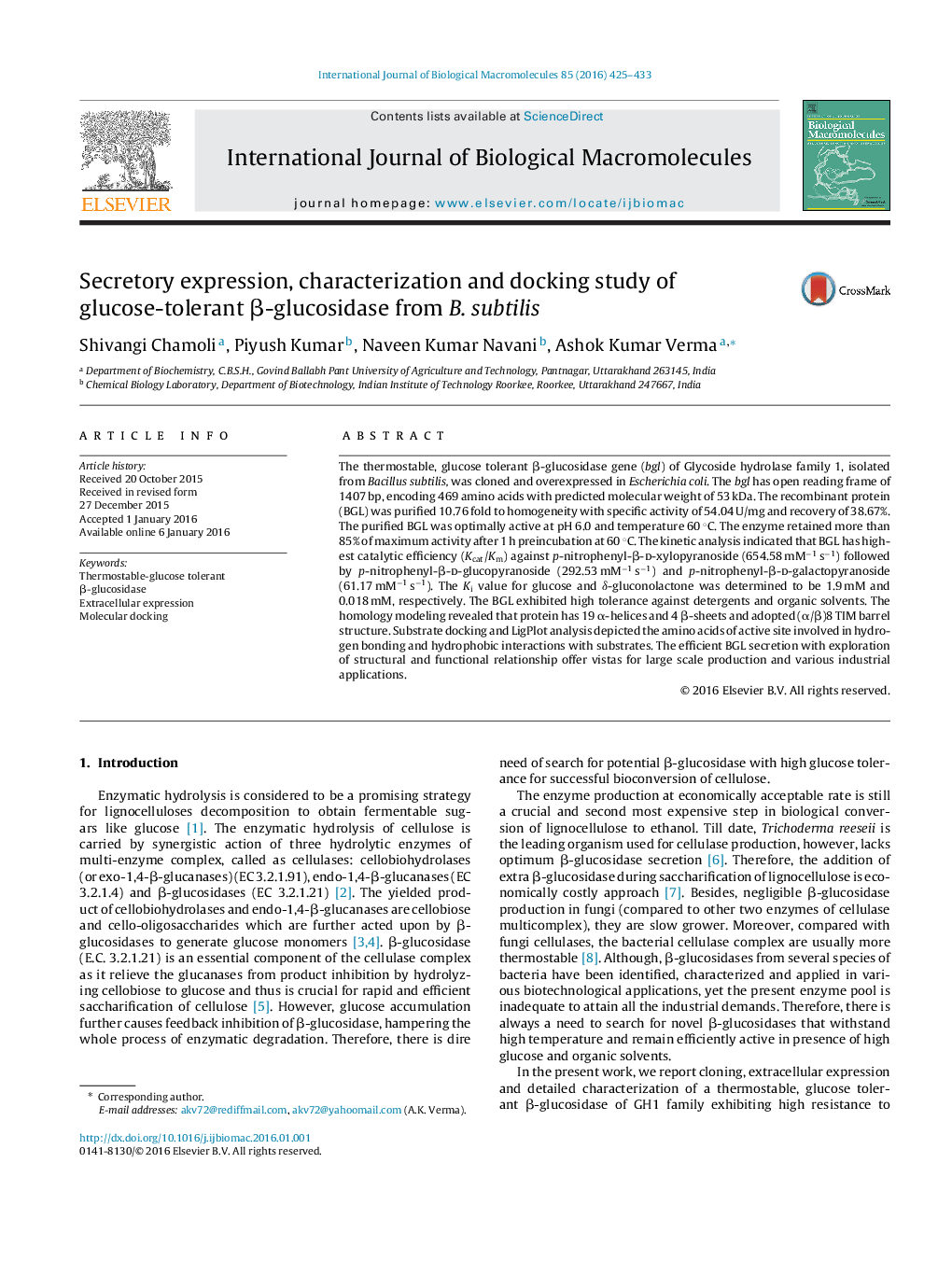| Article ID | Journal | Published Year | Pages | File Type |
|---|---|---|---|---|
| 1985840 | International Journal of Biological Macromolecules | 2016 | 9 Pages |
The thermostable, glucose tolerant β-glucosidase gene (bgl) of Glycoside hydrolase family 1, isolated from Bacillus subtilis, was cloned and overexpressed in Escherichia coli. The bgl has open reading frame of 1407 bp, encoding 469 amino acids with predicted molecular weight of 53 kDa. The recombinant protein (BGL) was purified 10.76 fold to homogeneity with specific activity of 54.04 U/mg and recovery of 38.67%. The purified BGL was optimally active at pH 6.0 and temperature 60 °C. The enzyme retained more than 85% of maximum activity after 1 h preincubation at 60 °C. The kinetic analysis indicated that BGL has highest catalytic efficiency (Kcat/Km) against p-nitrophenyl-β-d-xylopyranoside (654.58 mM−1 s−1) followed by p-nitrophenyl-β-d-glucopyranoside (292.53 mM−1 s−1) and p-nitrophenyl-β-d-galactopyranoside (61.17 mM−1 s−1). The Ki value for glucose and δ-gluconolactone was determined to be 1.9 mM and 0.018 mM, respectively. The BGL exhibited high tolerance against detergents and organic solvents. The homology modeling revealed that protein has 19 α-helices and 4 β-sheets and adopted (α/β)8 TIM barrel structure. Substrate docking and LigPlot analysis depicted the amino acids of active site involved in hydrogen bonding and hydrophobic interactions with substrates. The efficient BGL secretion with exploration of structural and functional relationship offer vistas for large scale production and various industrial applications.
